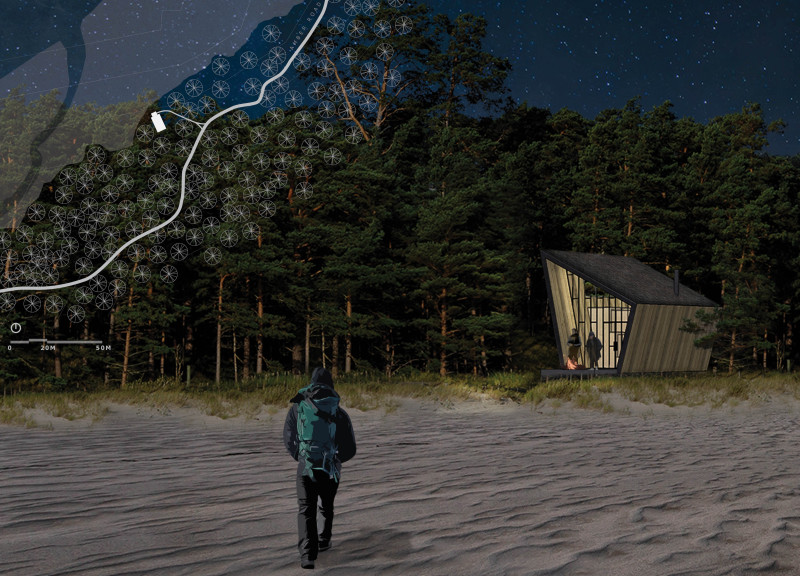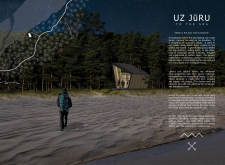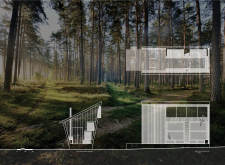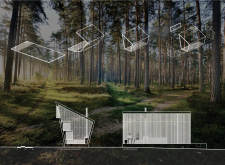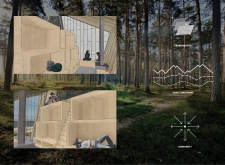5 key facts about this project
## Project Overview
Located along Amber Road near the coast of Latvia, the Uz Jūru project reflects a commitment to harmonizing architecture with the natural landscape and cultural heritage. Designed primarily for backpackers, the intent is to provide functional yet minimalistic shelter that enhances the experience of those traversing this scenic area. The architectural form, characterized by an angular structure, draws from traditional elements while presenting a contemporary interpretation.
## Materiality and Structural Strategy
The project emphasizes sustainability and craftsmanship, utilizing locally sourced materials. Pine wood, harvested from nearby forests, forms the core of the structure, while thatch serves as an insulating roofing material, reinforcing local building traditions. High-performance translucent and transparent walls enable abundant natural light, fostering a strong visual connection to the external environment. This thoughtful material selection not only supports ecological principles but also integrates the structure within the surrounding landscape.
## Spatial Configuration and User Interaction
The exterior features an angular roofline that echoes the natural topography, marked by asymmetrical folds reminiscent of a pine cone. This design encourages dynamic light and shadow play throughout the day. A spacious deck promotes communal living, inviting social interaction in close proximity to a wood-burning fireplace, which serves as a gathering space.
Inside, the layout focuses on maximizing functionality while maintaining comfort. Modular furniture crafted from lightweight wood offers versatile uses, adapting to the occupants' needs for seating, sleeping, and storage. Full-height windows establish a strong relationship between interior spaces and the outdoors, enhancing aesthetic quality, natural ventilation, and reducing reliance on artificial lighting.
The design also considers the edge conditions, creating a seamless transition between the built environment and nature. By promoting exploration and engagement with the surrounding landscape, it facilitates social interaction among users, fostering connections within the larger hiking community.


